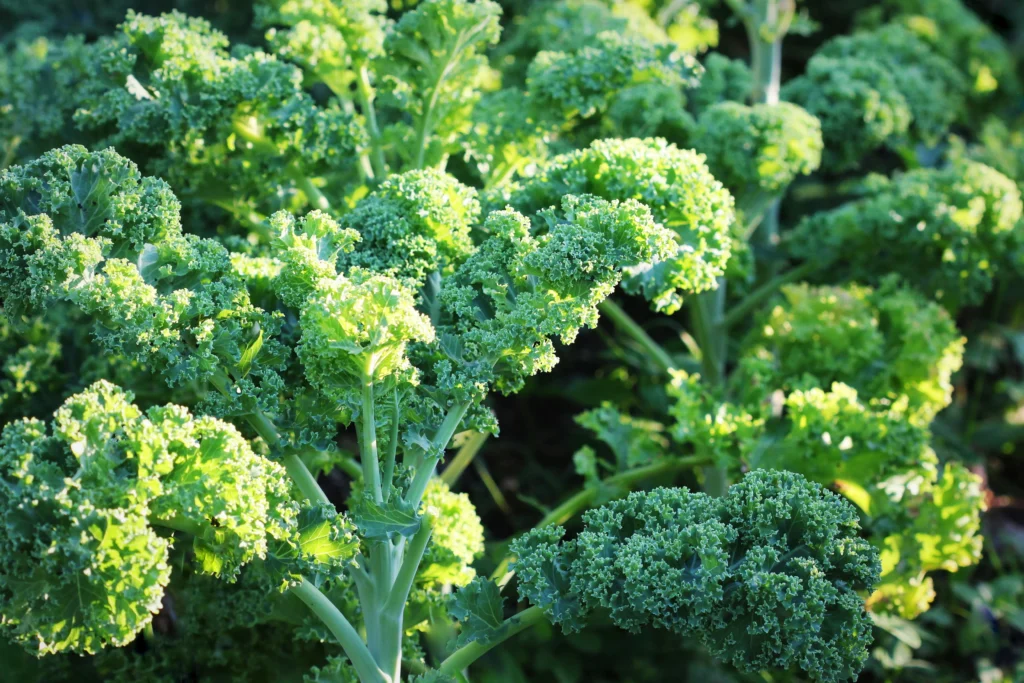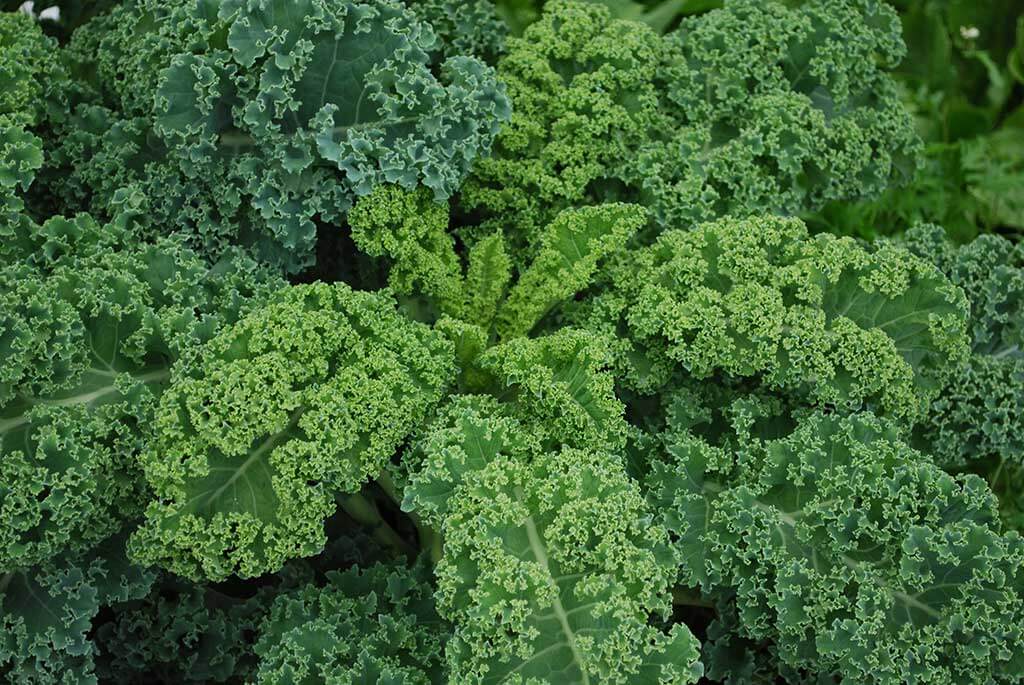
🥬 How to Grow Kale from Seed in Your Vegetable Garden
A Beginner-to-Advanced Guide for Planting, Growing, and Harvesting Kale the Right Way
Kale has earned a top spot in the modern vegetable garden—and for good reason. It’s healthy, hardy, and one of the easiest leafy greens to grow, even if you’re brand new to gardening. Plus, it thrives in both spring and fall, survives frost, and just keeps growing after every harvest.

In this complete guide, we’ll walk you through everything you need to know to grow kale from seed—right in your own vegetable patch. From choosing the right variety to knowing when and how to sow, care for, and harvest your kale plants, we’ve got all the info you need to get started like a pro.
🌱 Why Grow Kale from Seed?
There are plenty of great reasons to start kale from seed rather than buying transplants:
- More variety options: Seed catalogs offer dozens of kale types—curly, flat, red-veined, even purple!
- Stronger plants: Kale grown from seed often adapts better to your garden’s conditions.
- Cost-effective: A packet of seeds costs the same as just a couple of nursery transplants.
- Satisfying: Watching your greens go from seed to salad bowl is incredibly rewarding.
🧾 What You’ll Need Before You Start
Here’s a simple list of what you’ll need to grow kale from seed successfully:
- Kale seeds (choose your favorite variety)
- Seed-starting mix or rich garden soil
- Raised beds, garden rows, or containers
- A trowel, hand rake, or hoe
- Watering can or hose with gentle spray
- Organic fertilizer or compost
- Plant labels (optional but helpful)
🥬 Choosing the Right Kale Variety

There’s more to kale than the curly green kind at the grocery store. Here are a few popular types to consider:
| Variety | Features | Best For |
|---|---|---|
| Curly Kale (Scots) | Tight, frilly leaves | Salads, smoothies |
| Lacinato (Dinosaur) | Dark green, bumpy leaves | Soups, sautéing |
| Red Russian | Flat, reddish leaves, tender stems | Raw eating, garnishes |
| Siberian Kale | Cold-hardy with large flat leaves | Winter gardens |
| Premier or Winterbor | Fast-growing, very frost-tolerant | Year-round gardens |
Tip: For maximum harvest over a long season, grow more than one variety!
🌦️ When to Plant Kale Seeds
Kale is a cool-season crop, so the timing depends on your climate and growing season.
🗓 Spring Planting:
- Start seeds indoors 4–6 weeks before the last spring frost, or
- Direct sow outdoors 2–4 weeks before the last frost once soil is workable.
🍂 Fall Planting:
- Sow seeds outdoors 10–12 weeks before the first fall frost for a fall-to-winter crop.
Pro Tip: Kale becomes even sweeter after a light frost! The cold triggers the plant to convert starch into sugar.
🌿 How to Grow Kale from Seed: Step-by-Step Guide
:max_bytes(150000):strip_icc()/Growing-kale-1403516-upclose-1-77ac3f66f28a42f48d5dfffe87625e7c.jpg)
1. Prepare Your Soil
Kale grows best in well-draining, loamy soil that’s rich in organic matter. The ideal soil pH is 6.0 to 7.5.
- Work in compost or aged manure before planting.
- Loosen soil to about 8–10 inches deep for strong root development.
2. Sow the Seeds
You can start kale indoors in seed trays or plant directly in your garden.
🌱 Direct Sowing:
- Plant seeds ¼ to ½ inch deep.
- Space seeds 1 inch apart in rows, with 12–18 inches between rows.
- Thin seedlings later to 8–12 inches apart for full-size plants.
🌱 Starting Indoors:
- Use seed-starting mix in trays or biodegradable pots.
- Keep in a sunny window or under grow lights.
- Harden off seedlings for 5–7 days before transplanting outdoors.
3. Water Wisely
- Keep soil evenly moist during germination (usually 5–10 days).
- Once established, water deeply 1–1.5 inches per week depending on weather.
- Avoid watering the leaves—focus at the base to reduce disease risk.
4. Feed for Growth
Kale is a hungry plant! Feed your kale with a balanced, nitrogen-rich fertilizer every 4–6 weeks, or top-dress with compost.
Yellowing leaves? That’s a sign your kale is hungry—give it a nitrogen boost.
🧤 Advanced Care Tips for Healthier Kale
- Mulch around the plants to retain moisture and prevent weeds.
- Rotate crops each year to avoid soil-borne pests and diseases.
- Interplant with herbs like dill, cilantro, or chamomile to repel pests naturally.
- Harvest outer leaves first to keep the plant producing over time.
🐛 Pest & Disease Management
While kale is generally tough, it can fall victim to a few common garden pests.
| Pest/Disease | Symptoms | Treatment |
|---|---|---|
| Cabbage worms | Holes in leaves | Hand-pick or use neem oil |
| Aphids | Clusters of small bugs on leaves | Spray with insecticidal soap |
| Flea beetles | Tiny pinholes in young leaves | Row covers or diatomaceous earth |
| Downy mildew | Yellow spots, fuzzy growth | Improve airflow, water early AM |
Check your kale weekly, especially in warm, wet weather when pests thrive.
✂️ Harvesting Kale the Right Way

You don’t have to wait until the whole plant matures to start harvesting.
When to Harvest:
- Baby kale: 25–30 days after sowing.
- Mature leaves: 50–70 days, depending on variety.
How to Harvest:
- Pick outer leaves first once they’re 5–8 inches long.
- Leave the central bud intact—it’ll keep producing new leaves.
- Regular harvesting encourages more growth.
For the most tender and sweet leaves, pick in the morning before the sun hits hard.
🧊 Can Kale Survive Frost?
Absolutely—and it thrives in cooler temperatures!
In fact, kale is frost-tolerant down to the low 20s (°F). Some varieties, like Winterbor and Siberian, can even withstand snow. And the best part? A frost actually makes the leaves sweeter and more flavorful.
🥗 How to Store and Use Fresh Kale
Once harvested, kale can stay fresh in the fridge for up to a week.
- Wrap leaves in a damp paper towel and store in a breathable bag.
- Blanch and freeze extras for use in soups, smoothies, and stir-fries.
- Use baby kale raw in salads, or massage mature leaves with olive oil to soften them.
Avoid washing until you’re ready to use—it lasts longer dry!
Table of Contents
❓ Frequently Asked Questions
Q: Can I grow kale in containers?
Yes! Kale grows well in pots at least 12 inches deep. Just make sure there’s enough room for root growth and good drainage.
Q: Why are my kale seedlings leggy?
Leggy seedlings often mean not enough light. Move them to a sunnier spot or use a grow light.
Q: Can I regrow kale after cutting?
Yes—kale is a cut-and-come-again crop. As long as you don’t cut the center crown, new leaves will continue to sprout.
Q: How long does a kale plant live?
Kale is technically biennial, meaning it can live for two years, but it’s usually grown as an annual. In warm climates, it can keep producing leaves into the second year before bolting.
Q: What’s the difference between baby kale and mature kale?
Baby kale is harvested early and has tender, mild leaves, ideal for salads. Mature kale is heartier and more suited for cooking.
✅ Conclusion: Why Kale Deserves a Spot in Every Garden
Kale isn’t just a trendy superfood—it’s a garden workhorse. It’s easy to grow, incredibly resilient, and keeps producing for months with minimal care. Whether you’re looking to fill out your garden with nutritious leafy greens or just want a reliable, frost-tolerant crop to harvest long after others are done, kale delivers.
Growing kale from seed puts you in full control of the variety, health, and yield of your harvest. And with the right preparation, timing, and care, you’ll be enjoying fresh, flavorful kale all season long—straight from your garden to your plate.
So grab a packet of seeds, dig in, and let your kale-growing journey begin! 🥬🌱
🧾 Kale Growing Recap (Quick Reference Table)
| Task | Details |
|---|---|
| When to Plant | Spring (before last frost) or late summer |
| Soil Type | Loamy, well-drained, rich in compost |
| Seed Depth | ¼ to ½ inch deep |
| Spacing | Thin to 8–12 inches apart |
| Sunlight | Full sun (6–8 hrs), tolerates partial shade |
| Watering | 1–1.5 inches per week |
| Days to Harvest | 25–30 days (baby), 50–70 days (mature) |
| Fertilizing | Every 4–6 weeks or compost top-dressing |
| Frost Tolerance | Very high – improves flavor! |
